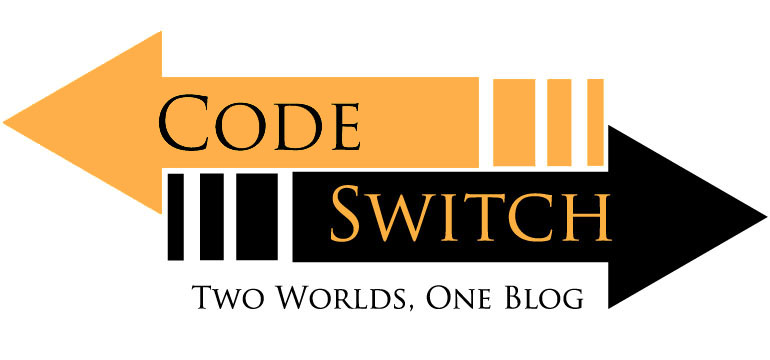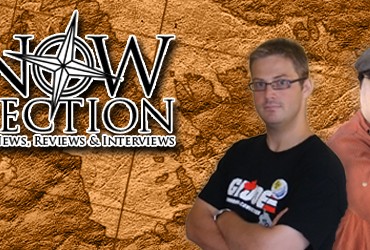Slavery is a common practice in Pathfinders’ campaign setting, Golarion. Pathfinder Society scenarios like; Slave Master’s Mirror, Slave Ships of Absalom, Slave Pits of Absalom have you step in and around the shoes of slaves. Ultimate Equipment has a table for buying slaves if you are inclined to do so as a PC. There is a ton of slavery in Golarion and while in the campaign setting abolitionist movements are in their infancy, they’ve been successful in our actual lives. They’ve been so successful in fact, slavery has almost become comical. In our world the idea of owning people against their will is so outlandish that it’s a common thread in kids TV shows, comedy sketches, and more often heard of as a sexual kink than an institutionalized concept.
While most of us aren’t slaves, there are people living today as slaves. They’re not just poor kids sold as mine labor in Africa or people kidnapped to work in the international drug trade, they include victims of abuses of all varieties and they are all around us.
How can you as a Pathfinder player or GM straddle that line between slavery as fantasy world fluff versus slavery as a real world problem in a respectful way?
To help with that were going to use something I just made up called the PILAF method. Hopefully the comical name helps allay the dread of this subject a bit. It focuses on five aspects of slavery: Victim (P)ortrayal, Non-Slave (I)dentity, (L)ack of Options, (A)cceptance of Situation, and (F)ear of Reprisal, PILAF.
Victim Portrayal
A slave is a victim. A person does not deserve to have their dignity as a human stripped and to be treated as capital. To portray a slave as someone who somehow deserved it is disrespectful to that fictional character and to the people that have dealt with slavery in real life. I do want to give attention to in game concepts like indentured servitude and forced labor, but will address this a little later on.
Identity as Non-Slave
A slave isn’t a robot, unless it’s a robot, but we’re talking human(oid) slaves here. In the same way that you are not your job, GPA or your haircut, a slave is a person who has characteristics beyond just being a slave. Giving slaves identities beyond their station can help foster increased sentiment at the table towards their plight. It can be difficult to write biographies for every slave in a game, so making a random job or quirk table can help you quickly differentiate slaves by giving them personality. Condensing the random backstory generator in Ultimate Campaign would be a good start as would using a random section of the Harrowing Character Generator in The Harrowmaster’s Handbook. If all else fails, generalizing the group can help. Rather than just a bunch of slaves tilling the soil they could be the passengers of the S.S. Minnow taken by force by pirates off the coast of Rahadoum and sold to a wealthy Chelish estate.
Lack of Options
A comment I’ve heard people say trying to rationalize slavery is “Well if they hate being slaves so much, why not revolt or leave?” (I’ve only heard this in games by the way.) This comment ignores the story of the people in slavery and makes slavery seem less evil because it falsely portrays the illusion of choice. In Golarion, most slaves are sold far from where they were captured. This mimics real life slave-trade practices, as slaves were often sold in markets foreign to their place of origin. This was done to rob the slaves of any regional sympathy. If slaves were captured and sold at their point of origin, they’d have a network of contacts, familiarity of culture, and possibly even the sympathy of their countrymen to help aid in escape or dissension. By taking people away from their support networks it made slavers more effective in slave retention. The slaves felt they had nowhere to go even if they did escape and escaping just to live in the wilds foraging isn’t as glamorous as it seems.
Another trick in the slaver arsenal is offering promotions to slaves, as if they were employees. This promotion often involved easier work, more food, or better boarding and that higher standard of life appealed to people living off scraps in huts. The practice gave slaves a feeling of ownership of their work and gave them hope for advancement, making them feel less trapped. This non-choice just served as a way to solidify the status of slaves as property. This enhanced a slaves feeling that they lacked options. Escape attempts were met with brutal repercussion for non-involved parties and if you left you risked dying of exposure, but if you stayed and worked hard you could improve your conditions. This somber rationalization exemplifies why slaves don’t often revolt or attempt to escape. So when you’re a GM roleplaying a slave and your PC’s coyly ask why you don’t just leave, present them with what the slave feels their alternative is.
Acceptance of Situation
If you were a slave whose parents were slaves whose grandparents were slaves and everyone who looks like you and everyone you know is a slave, you’ll probably end up accepting you’re a slave. Maybe you’ve seen people try to escape and be disciplined, or maybe you feel comfortable enough to not want to rock the boat. Try to think of this not as rational logic, but as emotional coping. Rather than drive yourself crazy on what could be, you instead mentally fence yourself in and accept your situation as what it was meant to be. When portraying a slave it’s okay to act out this submissive acceptance, just try to keep it low key. Try and speak about it matter-of-factly just as you would having to wake up to go to work instead of using loud, grand emotion fueled speeches and gestures. This is a direct parallel to accounts of real life slaves who harbor feelings that they got what they deserved. To further expand on this comment I’m going to link an article about sexual slavery and its survivors here. The article is safe for work, but it is provocative.
Fear of Reprisal
When keeping human capital, little kindnesses go a long way towards keeping order. A sexual slave may enjoy getting gifts from their owner, but they don’t stay around for the gifts, they stay around because trying to leave puts them at risk for physical harm. In a more historical perspective when a slave attempted to escape or actually did escape, their friends and family were punished in addition to the escapee. Making one person responsible to a group rather than to just themselves makes it almost impossible to rationalize your own desires above the well-being of a group of people, especially if that group includes loved-ones. In game a slave may deny themselves freedom if they feel that they or their family will face reprisal for their actions.
Force Labor and Indentured Servitude
Before I wrap up I do want to bring attention to some topics I mentioned; Indentured Servitude and Forced Labor. Indentured Servitude was a type of “slavery as employment” agreement that most prominently in US history was used by colonist coming to the United States as a way to pay their fare over. Under ideal circumstances this works well; the employer and servant sign a contract outlining the terms and conditions of employment and repayment, the servant works for the agreed upon length of time, and at the end the servant is absolved of their debt and possibly given land, cash, or things of value in excess of the value of their transit, housing, and feeding expenses. This system is very easily corrupted as the servant has no real recourse or power in enforcing their end of the agreement. In the modern day you see examples of this with contact workers. Abu Dhabi is notorious for using contract workers from poor countries as cheap labor. Since they are visitors on work visa’s they aren’t residents of Abu Dhabi and therefore don’t receive the same protections as a citizen from Abu Dhabi. This is another topic too big for this article, and I’ll give a link to an insightful article about it here. Back in Golarion indentured servitude exists, most visibly in Druma. The Prophecies of the Kalistrade forbids charity and places value on work, so instead of begging the poor are expected to sign on as labor to people wealthier than them. Indentured Servitude is like slavery in the work being done, it differs as it is an agreement by both parties for a determined length of time while slavery has no agreement and an indefinite length of service.
Forced Labor is a different beast all together. The sufferers of force labor are often people captured during conflict. Rather than having a vested interest in things like profit like slave-owners, the captors of force laborers view them as machines meant to be used up rather than tools used to do work. During wartime captured combatants were often forced to do manual labor to receive their daily rations. If you couldn’t work, you couldn’t eat, and by the same sad token if you couldn’t eat, you couldn’t work. It’s in forced labor you see people literally worked to death. Slavery isn’t a good alternative, but in slavery the slave -owners often have financial interest in making sure their slaves survive and are useful for as long as possible. In forced labor, the laborers are viewed as expendable resources to be replaced by other people captured in the conflict, and if the cost of feeding a forced laborer outweighs the value of their work, they are disposed of. Elie Wiesels’ book Night gives further detail to this point, “Remember it forever. Engrave it into your minds. You are at Auschwitz, and Auschwitz is not a convalescent home. It’s a concentration camp. Here, you have got to work. If not, you will go straight to the furnace. To the creamatory. Work of the crematory-the choice is in your hands.” (Wiesel, E., & Wiesel, M. (2006). Chapter 2, In Night (p. 22). New York, NY: Hill and Wang, a division of Farrar, Straus and Giroux.) As a GM you can still use the PILAF method in portraying force laborers with one small tweak. Fear of reprisal is strong in slaves as they usually work until old age; this is not always the case with forced laborers. In forced labor the specter of death looms constantly so the fear of being killed for trying to escape may be mitigated by the feeling you’re going to be murdered regardless of your actions.
The goal of this article is to help shift the perspective of “slaves” to “victims” to increase empathetic engagement with slave PCs and NPCs. By changing slaves from a weak-willed homogeneous concept to a collection of oppressed individuals you can create more vibrant, awesome stories that are respectful of the hardships real world slaves face. Hopefully the PILAF method of portraying slaves is helpful to you in your games. If you think there’s anything I glossed over or if you have any good ways you deal with slavery in your games drop me a line down in the comment section.







Excellent article. Thank you.
I’ve long wrestled with slavery in a fantasy setting, why it exists and how to portray it.